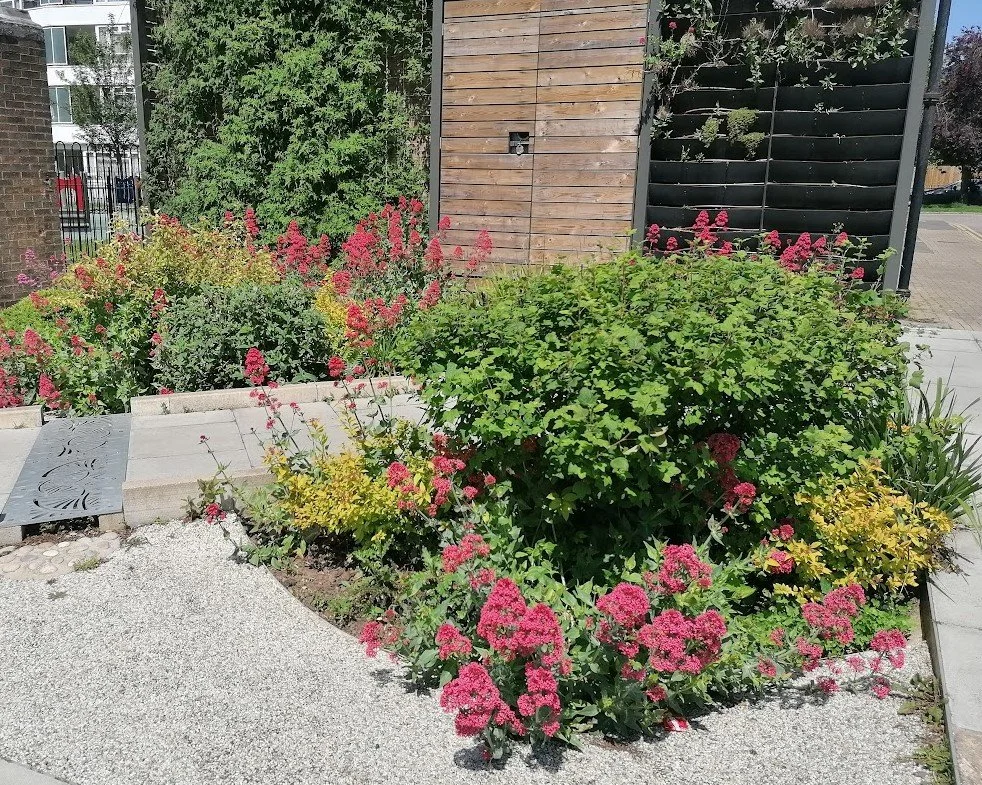Rain Gardens
I have recently been working on a design for a rain garden. Rain gardens are a fantastic way to help reduce negative impacts of climate change and to increase wildlife in your garden.
In our towns and cities the natural process of infiltration has been reduced due to buildings and hard landscaping. Combined with changing weather patterns such as heavier rainfall, this has caused an increase in local flooding as runoff from the hard surfaces overwhelms drains.
Rain gardens help by reducing the peak flow of water into the drains. They consist of a shallow ‘basin’ filled with plants which temporarily stores rainwater during heavy rain. They can be used in gardens and streets: here is one in Hammersmith, London.
Colourful rain garden in the London Borough of Hammersmith and Fulham
Rainwater is stored in the garden for a short time, usually no longer than 24 hours. The plants in the rain garden slow down the rate at which the water enters the soil, and gradually the rain will infiltrate the ground and some will be taken up by plant roots and then transpire and evaporate.
To create a rain garden, the downpipe from your roof is disconnected from the drain and is instead diverted into your garden, creating opportunities for interesting garden features. The picture below shows the path of rainwater in the design I have created for my own garden.
Path of water in my rain garden design (after Dunnett and Clayden ‘Rain Gardens’ (2007))
Rainfall on the roof of the house is taken, via the downpipe, not to the drain but directly to a water butt. When this becomes full, it overflows into a raised pond. When this in turn fills up the water spills out into a channel from where it flows into the rain garden basin. A ‘berm’ or lip is created when the rain garden is dug, to prevent overflow into the rest of the garden.
Rain gardens provide a range of conditions which enables diverse planting. This range of different habitats within a small space is great news if you have a small garden like me. Boundaries between habitat types are particularly valuable to wildlife. Plants are chosen to suit the conditions in the rain garden, for example, in the bottom of the basin the plants are suitable for short term flooding, whereas on the top of the berm, plants are selected for these drier conditions.
The concept design for my garden is shown below, I will be using recycled materials where possible and a naturalistic feel to the planting.
Concept plan for rain garden
Before installing a rain garden is it necessary to check if your soil is sufficiently free draining and your garden not too steeply sloped. They are a great way to have a beautiful, wildlife-rich garden while minimising any negative impacts on the natural world.



